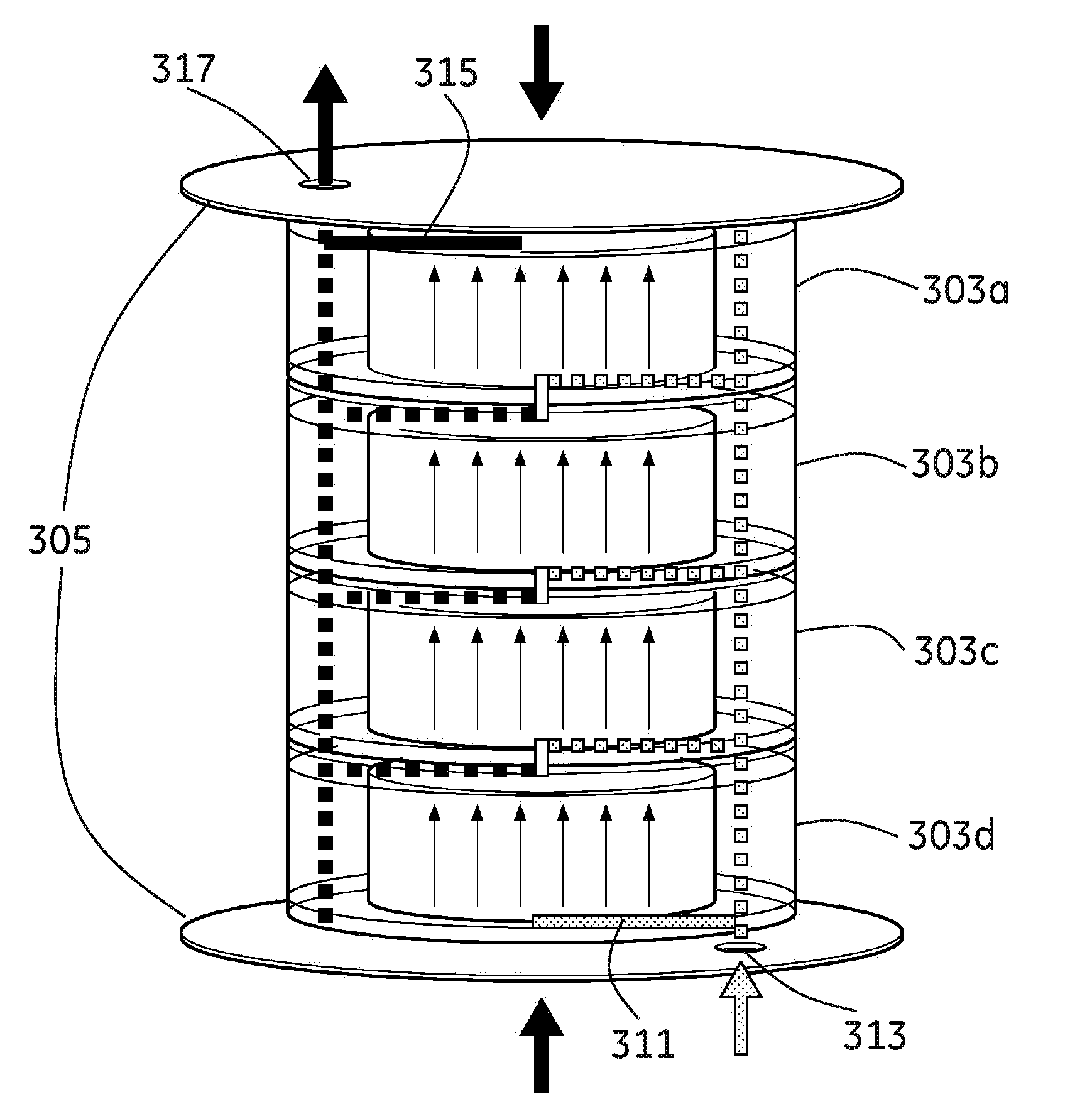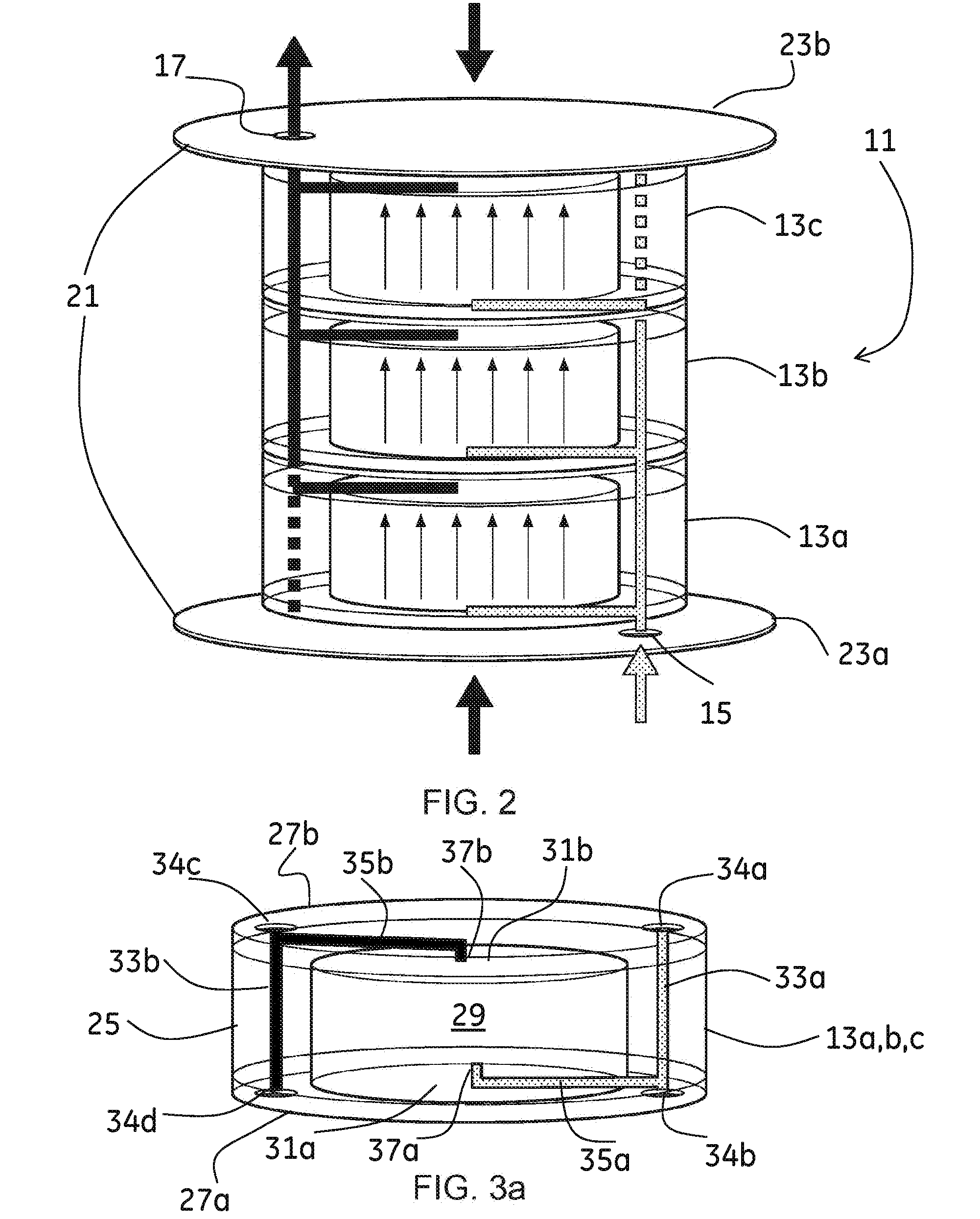Parallel assembly of chromatograpy column modules
a chromatography and module technology, applied in the direction of separation processes, instruments, manufacturing tools, etc., can solve the problems of increasing the overall footprint of the equipment, increasing the overall cost of the entire equipment, and increasing the overall cost of the prior art column by a large number of small parts, so as to achieve flexible and scalable chromatography
- Summary
- Abstract
- Description
- Claims
- Application Information
AI Technical Summary
Benefits of technology
Problems solved by technology
Method used
Image
Examples
Embodiment Construction
[0034]FIG. 1 shows schematically a flow scheme for a separation system 1 comprising a parallel assembly 2 of three chromatography column modules 3a, 3b, 3c according to one embodiment of the invention. The number of parallel connected column modules can also be two or more than three. The parallel assembly 2 comprises in this example three parallel fluid paths 4a, 4b, 4c. Each fluid path 4a, 4b, 4c comprises one column module 3a, 3b, 3c. One assembly inlet 5a defines a common fluid inlet to the parallel assembly 1 and one assembly outlet 5b defines a common fluid outlet from the parallel assembly 2. The separation system 1 comprises further an inlet fluid path 6a connecting to the assembly inlet 5a and an outlet fluid path 6b connecting to the assembly outlet 5b. The inlet fluid path 6a comprises in this embodiment a pump 7, a flow meter 8 and a pressure sensor 9. Alternatively the flow meter could be positioned downstream the parallel assembly 3, which is shown as flow meter 8′. In...
PUM
| Property | Measurement | Unit |
|---|---|---|
| thickness | aaaaa | aaaaa |
| flow rate | aaaaa | aaaaa |
| flow rate | aaaaa | aaaaa |
Abstract
Description
Claims
Application Information
 Login to View More
Login to View More - R&D
- Intellectual Property
- Life Sciences
- Materials
- Tech Scout
- Unparalleled Data Quality
- Higher Quality Content
- 60% Fewer Hallucinations
Browse by: Latest US Patents, China's latest patents, Technical Efficacy Thesaurus, Application Domain, Technology Topic, Popular Technical Reports.
© 2025 PatSnap. All rights reserved.Legal|Privacy policy|Modern Slavery Act Transparency Statement|Sitemap|About US| Contact US: help@patsnap.com



